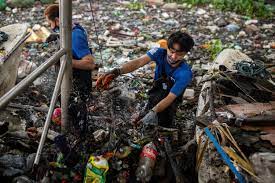No trees are seemingly cut down every time you Google something or read a social media post on your phone or laptop. But websites alone do create emissions—internet usage is responsible for almost four percent of global emissions. That might not seem like a lot, but its equivalent to about the same emissions caused by global air travel. That percentage is predicted to almost double by about 2025 according to a post by Brussels-based energy magazine Energuide. And internet usage is on the rise– as COVID shut down the world last spring pushing many jobs and education online, internet usage went up as high as 40 percent, Yale News reported.
“The pandemic-related switch to digital has important environmental benefits, such as the reduction of travel-related carbon emissions, but the transition to a more digitally-centered world is not as clean as one might think,” Kaveh Madani, the Henry Hart Rice Senior Fellow at the Council on Middle East Studies at Yale’s MacMillan Center who led a study that outlined the internet’s environmental impacts, told Yale News.
The emissions caused by websites comes from the hosting company that ensures that websites are up and running when users search for them, on their server. By working with an environmentally-sound server like GreenGeeks, A2 Hosting, and HostPapa that focuses on renewable energy or lowering their energy usage, websites become more sustainable, Wired UK reported. Something as simple as using fewer images on a webpage also helps lower emissions. Another way to lower emissions is to have simply designed websites with little to no moving images like gifs.
“Images are the single largest contributors to page weight. The more images you use and the larger those image files, the more data needs to be transferred and the more energy is required,” Vineeta Greenwood, account director at design agency Wholegrain Digital told Wired UK.
Another aspect of creating more sustainable websites means raising awareness, or letting servers or customers in need of new web design know that it’s even an option for them. Some major search engines like Google have pledged to lower their tech centers’ water usage and to rely on more sustainable energy to run their search engines and other online products like Gmail and Google Docs.
Baruch Labunski, CEO of Toronto-based SEO company Rank Secure, explains that when many clients work with the company to have their websites designed, they don’t often think about sustainability. Companies like Rank Secure make a point to have sustainability as part of their process when working with businesses who want help with web design by relying on more sustainable data centers.
“As a marketing expert, designer and developer, one of my goals is to build sites that are eco-friendly, and I do that in several ways,” Labunski says. “[Rank Secure uses] data centers and infrastructure like Cloudflare, which not only minimize CPU and RAM use, but actively work toward sustainable technology.”
Carbon offsets are when greenhouse gas emissions are lowered or stored, for example when a company invests in plants that capture carbon versus something that will release more emissions. It’s not a perfect system, but if done correctly can allow businesses to reduce the impact of their emissions.
Cloudflare, Labunksi says, has declared that not only will they work toward operating at a zero carbon emission level, but additionally the group will offset every single bit of carbon emissions the company created since it was founded.
Of course, lowering the greenhouse gas footprint of your web page is just the start of building up a sustainable company. Just because a company does rely on some renewable energy to have an eco-friendly website doesn’t make them automatically eco-friendly.
Source : https://www.popsci.com/environment/website-sustainability/







